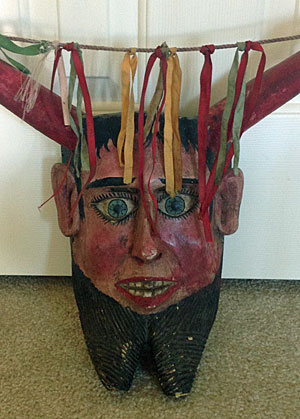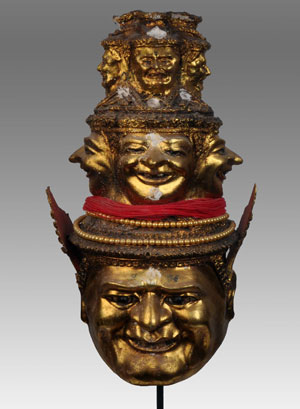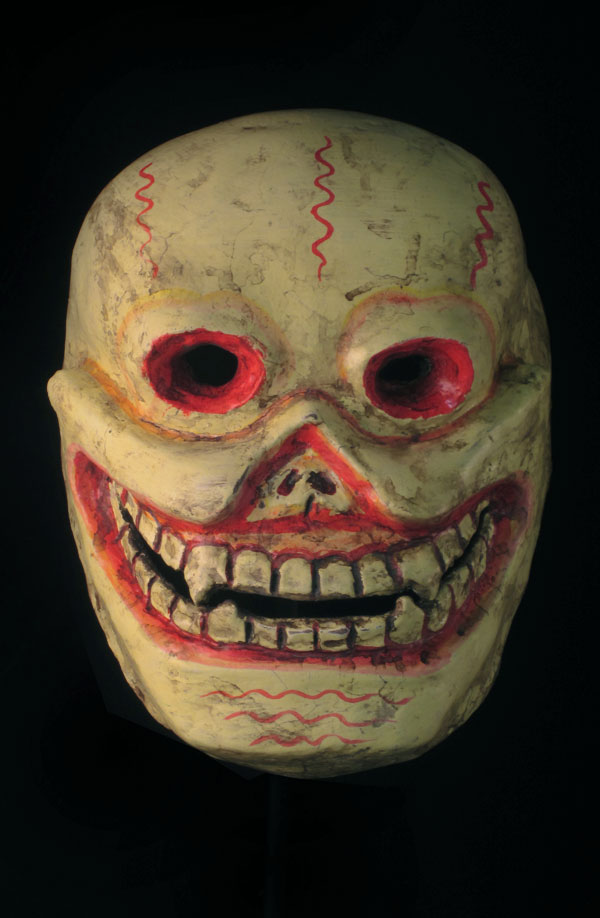 Q: This mask is rather mysterious to me, although I think it is still from Guatemala. Material: a heavy, dark brown wood with few rests of paint. The size is very small like for a child: 5.5” x 5.5” (14 x 14 cm). It shows a Spaniard with curly hairs, a thin long nose and beard. The style is severe, the painting very faded and reduced to stains, but I see traces of different layers of white (gesso?), red, blue and yellow. Small parts of the wood are chipped off like the tips of the beard, one with black wax on it, the lower lip and around the eyes. There are different small holes in the masks that have held something. Two tiny holes right in the middle of the ears and one the size of a tooth stick between the lips (see photo where I put a tooth stick in it). Next to this hole there was another one which is blocked now and that runs through the mask to the back side.
Q: This mask is rather mysterious to me, although I think it is still from Guatemala. Material: a heavy, dark brown wood with few rests of paint. The size is very small like for a child: 5.5” x 5.5” (14 x 14 cm). It shows a Spaniard with curly hairs, a thin long nose and beard. The style is severe, the painting very faded and reduced to stains, but I see traces of different layers of white (gesso?), red, blue and yellow. Small parts of the wood are chipped off like the tips of the beard, one with black wax on it, the lower lip and around the eyes. There are different small holes in the masks that have held something. Two tiny holes right in the middle of the ears and one the size of a tooth stick between the lips (see photo where I put a tooth stick in it). Next to this hole there was another one which is blocked now and that runs through the mask to the back side.
What was the use or origin of this mask? What was sticking in the holes? And might there have been inlays in those overlarge eyes (there are chips and scratches around them)? Still I perceive features of a Mayan style in this mask like the square shape (length = width), the flat and square ears and the high crest of the forehead in profile. How old is this mask? Hanno, 1587
A: Masks of this size are probably for children to wear. We don’t see them very often. This one is old, perhaps over 100 years, and has been used a lot. A good collection should have one of these. A






